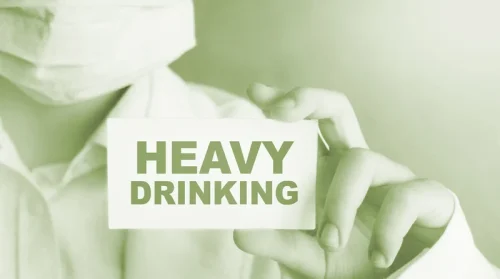Cannabinoid Hyperemesis Syndrome CHS: Causes, Symptoms & Treatment

People with CHS also tend to have a strong urge to take very hot showers or baths. That’s because hot water can help ease cannabinoid hyperemesis syndrome symptoms like nausea. The hot temperature affects a part of the brain called the hypothalamus, which regulates temperature and throwing up. Exclusion of a major medical etiology is mandatory prior to the consideration of CHS.
What happens if cannabis hyperemesis syndrome is left untreated?

Confusion exists in the medical literature secondary to a failure to recognize chronic marijuana use as a source of vomiting. For example, in two recently published series of adult patients with CVS, approximately one third of patients reported daily marijuana use [65,66]. Based on the categorization of functional disorders developed by Rome III, chronic marijuana use (CHS) is recognized as a mechanism for nausea and vomiting distinct from CVS [67]. Although both conditions share an astonishing similarity, there are several significant differences. For example, CVS patients usually have important psychological comorbidities including depression and anxiety [64,65]. In addition, CVS patients have a high prevalence of migraine headaches or a family history of migraines.
- The quality of evidence for each main outcome of this systematic review was evaluated using the GRADE working group metrics [83].
- This systematic review is the first and most comprehensive characterization of the CHS literature.
- When you use marijuana for many years, it can start to slowly change how the receptors in your body respond to the cannabinoid chemicals.
- Additionally, criteria vary significantly, which may contribute to diagnostic uncertainty among providers.
- The CB1 and CB2 receptors function as G-protein coupled receptors that act by inhibiting adenylate cyclase [7].
Review Questions
These advances enhanced the understanding of cannabinoid (CB) receptors, which led to a better appreciation of the role of cannabis in inflammation, seizures, emesis, and as an appetite stimulant. There is a growing body of research showing the benefit of cannabis in the aforementioned disorders, and its legalization will further augment research on understanding its critical role in new drug developments [3,4]. However, these changes also come with substantial cannabinoid hyperemesis syndrome risks regarding its adverse effects, such as paradoxical hyperemesis, intoxication and behavioral changes (anxiety, panic attacks, and psychoactive changes). Approximately 9% of individuals who use cannabis report dependence at some point in their use [5]. Cannabis can paradoxically act as an antiemetic during acute ingestion at low doses, whereas persistent high-dose ingestion could result in vomiting, a behavior similar to cyclical vomiting [6].
- The best evidence suggests a dynamic interplay between cannabinoid metabolism and complex pharmacodynamics at the CB-1 receptor.
- Ultimately, the treatment of any illness is the removal of precipitating factors, not merely the management of its symptoms.
- Rates of cannabis use disorder have spiked in the past 40 to 50 years, D’Souza said, with some studies suggesting between 20 and 30 percent of marijuana users meeting the criteria for the disorder.
- Other workups, including complete blood count (CBC) with differential, complete metabolic panel, lipase, amylase, and urine analysis, were all unremarkable.
Differential Diagnosis
With the widespread use, increased potency and legalization of marijuana in multiple states in the U.S., CHS may be becoming increasingly common. Cannabidiol (CBD) and cannabigerol (CBG) are two additional cannabinoids found in cannabis that appear to modulate the anti-emetic properties of THC. Cannabidiol, in contrast to THC, is non-psychotropic, has a low affinity for CB1 and CB2 receptors [27], and acts as a partial agonist at the 5-HT1A receptor [28]. CBD enhances the expression of CB1 receptors in the hypothalamus and amplifies the hypothermic effects caused by THC [29]. In animals the effect of CBD on toxin-induced vomiting displays a biphasic response with low doses producing an anti-emetic effect whereas higher doses enhance vomiting [30,31]. Two distinct cannabinoid receptors, CB1 and CB2, have been identified in human and animal models.
In this context a comprehensive history along with initial screening tests should be performed to exclude acute conditions and emergencies (e.g pancreatobiliary disease, intestinal obstruction, pregnancy, etc). This includes laboratory tests (complete blood count and differential, glucose, basic metabolic panel, pancreatic and hepatic enzymes, pregnancy test), urinalysis, urinary drug screen, and plain flat radiographic series [63,64]. Two reviewers (CS and AM) independently reviewed all titles generated by the search to identify potentially relevant articles.
- One study found up to 6% of people who went to the emergency room for cyclical vomiting had CHS.
- Importantly, for the definition of cyclic vomiting syndrome, these episodes of vomiting cannot be attributed to other disorders.
- These compounds are referred to as endogenous cannabinoids, or endocannabinoids.
- However, after abstaining from alcohol for long periods, the patient had continued recurrence of the symptoms and increased frequency of presentations to the ED.
Can CBD products without THC cause cannabis hyperemesis syndrome?

It’s still possible to develop CHS if you use cannabis for many years without having any problems. Researchers are still trying to figure out exactly what causes CHS in some people who regularly use cannabis but not others. As the laws regarding the possession and use of marijuana change, CHS may become more prevalent because more people will have legal access to the drug. Doctors have a lack of knowledge of CHS, and this makes it hard to identify people with the condition. As CHS is a newly described condition, many doctors may find it challenging to diagnose and treat. Researchers have tried to explain what causes CHS, but further study is necessary.
However, doctors may find it challenging to diagnose the syndrome because people tend not to report their use of marijuana. Doctors also noticed that individuals with CHS would take frequent hot showers and baths. The pathophysiology of CHS is unclear secondary to a dearth of research dedicated to explicitly investigating its underlying mechanism. Nevertheless, some limited evidence suggests a dynamic interplay between cannabinoid metabolism and complex pharmacodynamics at the CB-1 receptor.
When to Seek Emergency Medical Help

Neither the psychological treatments nor the pharmacological treatments seem to be that effective,” he said. Ultimately, the only way to guarantee health is by totally abstaining, he added. If the patient quits cannabis consumption, vomiting due to CHS largely subsides. It’s possible that with lower amounts or lower frequency, patients might be able to use cannabis again, but the science is unclear. Also, it’s possible there are more cases than have been reported, since not everyone with the illness will seek medical help or tell their doctor they use cannabis, the Cleveland Clinic notes.




